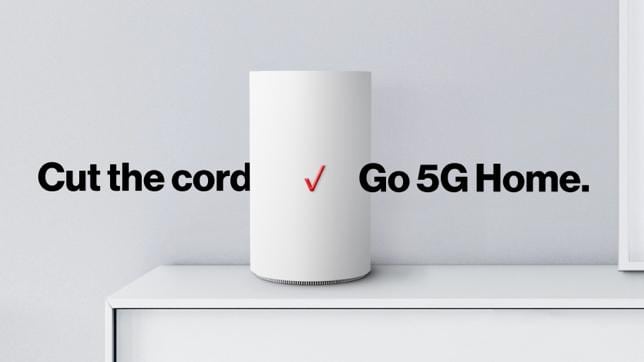5G Home customers roughly even split of existing and new subscribers
Verizon Executive Vice President and Chief Technology Officer Kyle Malady, speaking June 20 at the 2019 Wells Fargo 5G Forum, said he’s pleased with company’s fixed wireless 5G Home residential broadband service and added that the millimeter wave-based offering has seen “very little churn so far.”
In October Verizon launched 5G Home in four markets using network and consumer premise equipment based on its proprietary Verizon Technical Forum specifications. The plan is to relaunch the offering later this year using gear based on the global 3GPP 5G New Radio standard. Based on comments from executives, the end goal is to connect 30 million homes and build the network in tandem with a mobile network, which also taps high-band spectrum and is currently commercially available in Chicago and Minneapolis.
5G Home is available for free during a three-month trial then costs existing Verizon Wireless subscribers $50 per month; broadband-only customers pay $70 per month. In response to a question on customer willingness to pay a premium for 1 Gbps service, Malady said, “We have full coverage with 1 Gig in our Fios markets and people pay for it, people love it. That’s the beauty of millimeter wave and 5G. We’re seeing in fixed wireless, in our test markets, over a Gig consistently.”
The service is advertised as 300 Mbps but “A lot of the folks get over a Gig consistently,” he said. “So far very good feedback from customers about how solid it works, the throughput on it, the reliability, so very little churn so far.” Malady added that the fixed wireless service is “about half and half” Verizon Wireless customers and new customers.
Right now 5G Home comes with white-glove installation but the plan is to move to self-installation. But, the more expensive, white-glove installation results in “a lot more data” regarding measurements and optimal equipment placement. “We’re taking that into the mobility work that we’re doing.”
Malady also discussed Verizon’s ongoing deployment of fiber in more than 60 markets–“We wanted owner’s economics”–and the intersection of fiber and increasingly dense, street-level networks. “As the networks flatten and the antennas get smaller and you put them lower, I think the best way to characterize it is frankly wireless becomes fiber with antennas hanging off of it essentially. That’s why we decided we wanted to go big into fiber. It made sense to us because we’re…going to be densifying 4G. We saw 5G coming. And we see a host of other uses for the fiber.”
In addition to its existing spectrum portfolio, Verizon is pushing the U.S. Federal Communications to open the C-band with CEO Hans Vestberg recently meeting with FCC Chairman Ajit Pai. Malady said he doesn’t see Verizon as “vulnerable” when it comes to mid-band but, “I’ll always take more spectrum. I’ll always want more because if I have more I can do more. Would I like to have it? Fantastic. Do I need to have it? Not necessarily.”

